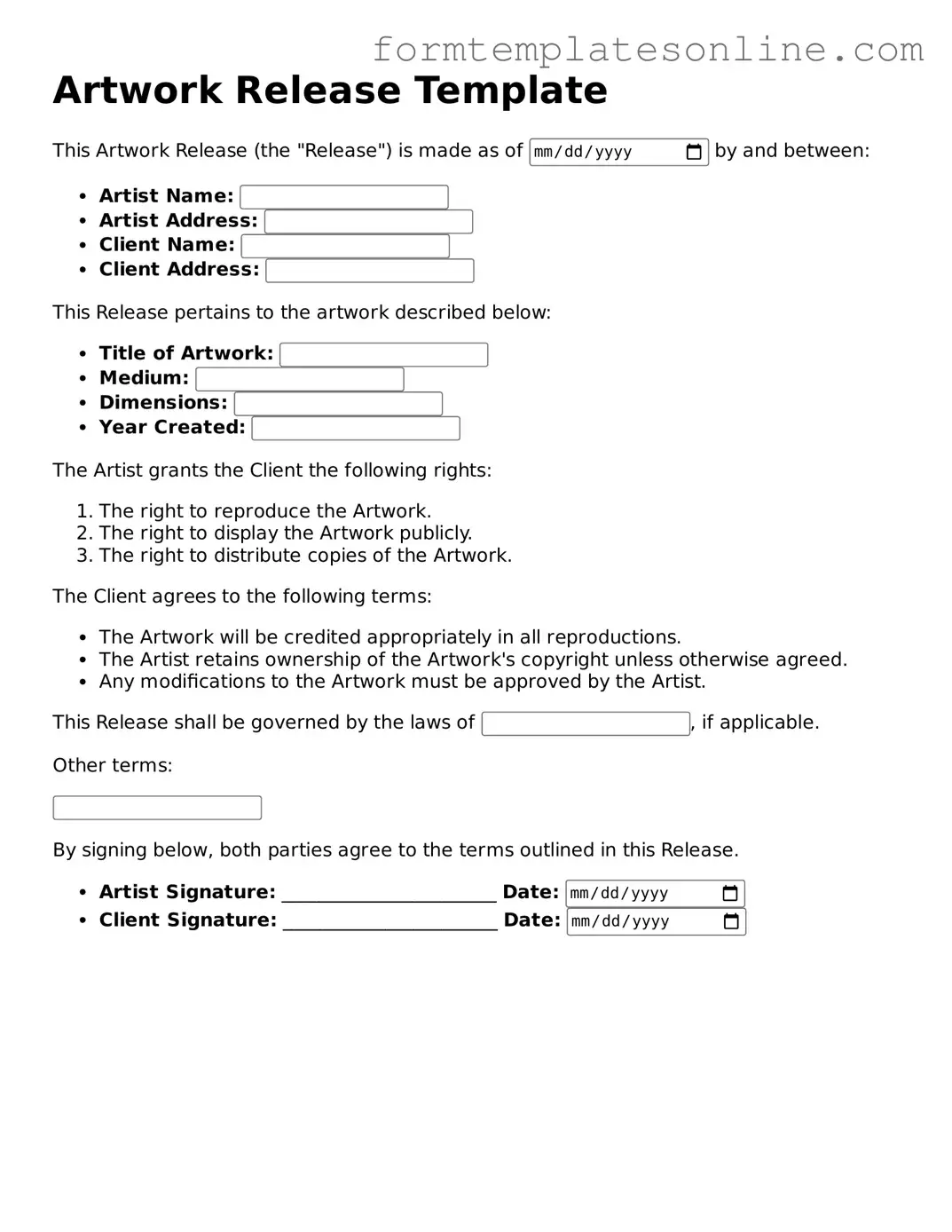What is an Artwork Release form?
An Artwork Release form is a legal document that grants permission for the use of a specific piece of artwork. This form is typically used by artists to allow others, such as businesses or individuals, to reproduce, distribute, or display their artwork. By signing this form, the artist ensures that their rights are protected while allowing others to utilize their creative work.
Who needs to sign the Artwork Release form?
The primary signatory of the Artwork Release form is the artist or creator of the artwork. However, if the artwork was created as part of a collaboration, all contributing artists may need to sign the form to ensure that everyone agrees on how the artwork can be used. Additionally, the party wishing to use the artwork may also be required to sign the form to acknowledge their understanding of the terms.
What information is typically included in the Artwork Release form?
The Artwork Release form generally includes details such as the name of the artist, a description of the artwork, and the specific rights being granted. It may also outline any limitations on usage, such as duration or geographic restrictions. Additionally, the form often includes spaces for signatures and dates to formalize the agreement.
Can I modify the Artwork Release form?
Yes, the Artwork Release form can be modified to suit the needs of both the artist and the party using the artwork. However, it’s important to ensure that any changes are clear and agreed upon by all parties involved. It’s advisable to consult with a legal professional if you have specific modifications in mind to ensure that the changes are enforceable.
What happens if the Artwork Release form is not signed?
If the Artwork Release form is not signed, the party wishing to use the artwork may not have the legal right to do so. This could lead to potential disputes or claims of copyright infringement. Without a signed release, the artist retains full rights to their work and can take action against unauthorized use.
Is the Artwork Release form legally binding?
Yes, once signed by all necessary parties, the Artwork Release form becomes a legally binding contract. This means that both the artist and the party using the artwork are obligated to adhere to the terms outlined in the form. If either party fails to comply, legal action may be pursued to enforce the agreement.
Where can I obtain an Artwork Release form?
An Artwork Release form can be obtained from various sources, including online legal document services, art organizations, or legal professionals. Many websites offer customizable templates that can be tailored to your specific needs. Ensure that the form you choose complies with local laws and adequately protects the rights of all parties involved.
